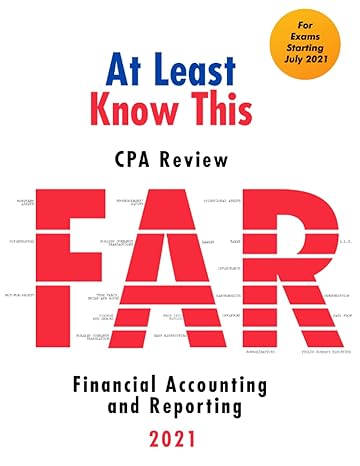Question
Jethro Bodine is a Nebraska farmer whose land and equipment are suitable for growing wheat, corn, and/or soybeans. He has 5,000 acres of prime arable
Jethro Bodine is a Nebraska farmer whose land and equipment are suitable for growing wheat, corn, and/or soybeans. He has 5,000 acres of prime arable land. He would plant his crop in April and harvest in October. His choice of crop must be made in early April in order to have sufficient time to secure seed, fertilizer, and various pesticides that would be applied during the growing season. Based on his past experience, if he plants wheat, his yield will be 50 bushels per acre; if he plants corn, his yield will be 110 bushels per acre; and if he plants soybeans his yield would be 65 bushels per acre. Assume that his crop yields are known with certainty (no quantity risk). Also assume that all of his production costs are fixed but vary by crop. His production costs per bushel (which do not include the cost of financing the crop) are as follows: Wheat: $4.90 per bushel, Corn: $2.68, Soybeans: $7.67 per bushel. He would borrow 100% of the cost of financing the crop (i.e., his production costs) from his local bank. The bank has agreed to lend against the crop (with the farm pledged as collateral) at the rate of 8% per annum compounded semiannually. Loan proceeds would be repayable with interest at the time of harvest. Thus, the financing would be for exactly six months and would cost 4% for the six 1 Other than the farm itself, the farmer has liquid assets of $150,000 that he holds in case of a financial calamity. The farmer also covers his fixed costs out of this reserve. Step 1: Determine the required borrowing (i.e., the size of then working capital loan he will require from his bank) if he plants wheat, the required borrowing if he decides to plant corn, and the required borrowing if he decides to plant soybeans. Assume that only variable costs (not fixed costs) are financed. Step 2: Determine the financing cost by applying the 4% rate to the required borrowing from Step 1. 1 This 4% rate for the six months is NOT continuously compounded. So the interest cost for the six month working capital loan is just 4% x principal borrowed. months. futures trading on the CBT) for wheat, corn, and soybeans are $6.01, $3.45, and $9.59, respectively. These represent the "expected" spot prices in October. Assume that the actual prices are lognormally distributed. In addition to the variable cost of producing his crop, he also has fixed costs of $40,000 a year for property taxes and depreciation on his buildings and equipment. It is currently April (decision time). The current forward prices (extracted from Step 3: Build a profit/loss function for each of the three crops. Note: just show the equation. You will not be able to solve. Step 4: Using the P/L functions from the prior step and the current October forward prices (given above), calculate his expected profit from each of the three crops he could plant. Which crop looks most attractive? Which looks least attractive?
Step by Step Solution
There are 3 Steps involved in it
Step: 1

Get Instant Access to Expert-Tailored Solutions
See step-by-step solutions with expert insights and AI powered tools for academic success
Step: 2

Step: 3

Ace Your Homework with AI
Get the answers you need in no time with our AI-driven, step-by-step assistance
Get Started


